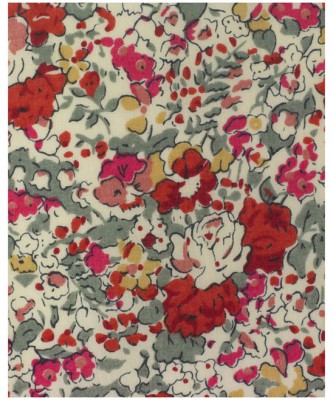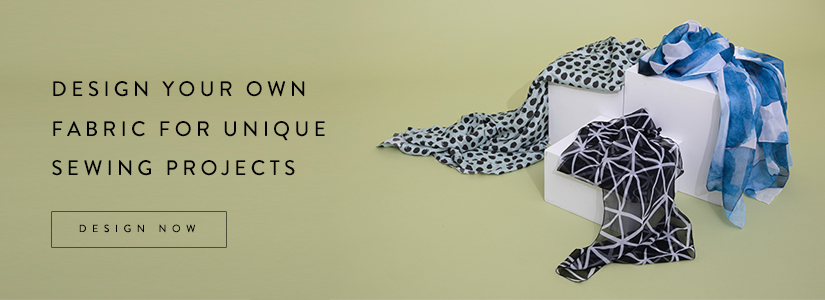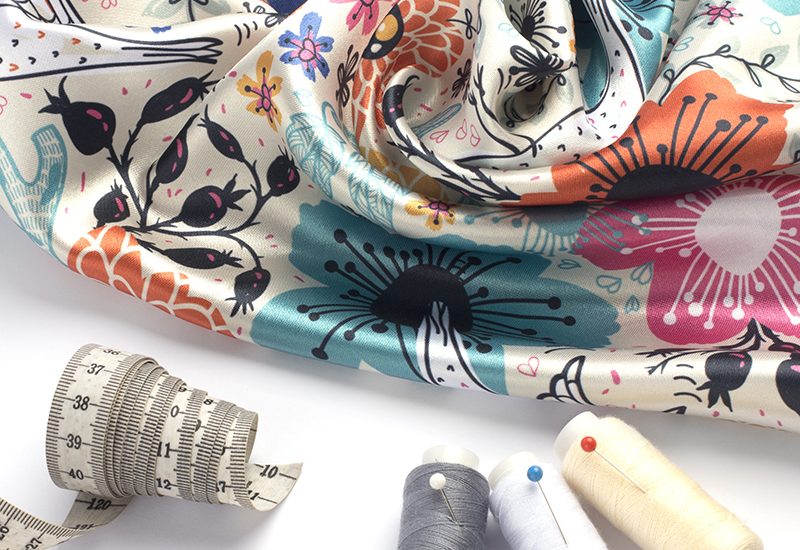It’s truly amazing when a series of designs stand the test of time. Becoming one of the most recognisable and iconic groups of prints in the world!
This is true of world-renowned Liberty London and their beautiful prints. At Bags of Love, it’s no secret that we adore prints and Liberty’s fabulous and instantly recognisable ditsy floral prints never cease to amaze us with their beauty and style.
We thought we would delve a little deeper into the history of Liberty’s famous prints, and how they got to where they are today. Ready to learn? Then let’s begin!


The Wonderful History Of Liberty Print Fabrics
Liberty first opened its doors on London’s Regent Street in 1875. The department store is the oldest and arguably the most beautiful in the city. It was here that founder, Arthur Liberty, printed the first of the soon to be famous Liberty Silks. The Mysore silk was imported from India and was dyed in England, where it was hand-printed using wooden blocks.


Arthur Liberty spent many years travelling to the Far East, gaining inspiration for his store. He would bring home beautiful rugs and fabrics, and he involved William Morris and other famous artists of the 19th Century, in the designing of rugs and materials.


Silks imported by Liberty from the orient were dyed, printed or woven in Britain and France. And the cotton was printed in Lancashire, Cumbria and Scotland. It was in 1904 when Liberty took over print works that specialised in block-printing silks, in Merton. A short distance away from William Morris’ works. It was at this point that Liberty started marketing their fabrics as “Made in England,”. This is where their growth as a British brand truly began.


In the 1920s, Liberty began to produce miniature floral, paisley and abstract prints. These became known as “Liberty Prints” and the rest is history!


The Legacy
Designers from all over the world still come and visit the Liberty archive for inspiration. New patterns are designed by either in-house designers or are commissioned from freelancers. New textile collections are produced each spring and autumn, to complement the classic range of designs. Today, almost 140 years after the company was formed and more than 40,000 prints later, they are still considered leaders in the field.#
Create Your Own Custom Fabrics
We are so inspired by these amazing prints, and we hope they inspire you too! If you’re feeling particularly floored by these fabulous florals, then why not create your own? Take inspiration and print dazzling fabrics with your own designs. We have over 100 different fabrics for you to choose from, so you will definitely be spoilt for choice.
Click the banner and get creative! Let the history of liberty print fabrics inspire you.



Thanks for the great history. I absolutely love Liberty print material. I am always buying the material from their website or local market and my mum is constantly experimenting making clothes with the fabric. The fabric never goes out of fashion and looks fabulous through all seasons. I have just posted an article using Liberty material to make a wire headband. You can make your own with my easy step-by-step guide here http://thatideasgirl.com/gifts/idea-15-make-your-own-headband/
Thanks for including as part of the history that the printing was undertaken at Merton. I am transcribing my late Fathers notes on his working life and he writes: ‘One firm that I worked for was Liberty’s – of silk printing fame – who had the printing factory at Merton in Merton Abbey Road. Very old buildings that stood in all their grandeur amidst trees and beautifully kept gardens. My job there was as a tier boy for which I received the princely sum of 15/- per week. The printer that I was assigned to in the shop was Mr. Heap – we lads gave him the name of Uriah – who hailed from the north of England. A fine man at his job and I never ceased to admire the way in which he handled the separate blocks which went into make up the beautiful patterns on the fine silks, chantings etc. The colour had to be perfect and so had the amount that we tier boys spread onto the trolleys which were set upon rails for easy moving. The old mill, since long still, with the old waterwheel silenced is still standing (1991) as proud and majestic as it was in it’s printing heyday. The grounds are no longer beautifully kept though and a textile company now operates in those lovely old Georgian buildings. I was told by the factory engraver that the old printing blocks were thrown into a heap and burnt. What a pity that these historical items were not saved.